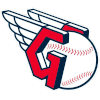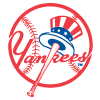Did you miss me? Apologies for the unintended hiatus. First, there was the All-Star break, then I was under the weather for a bit, then I was keeping up with the trade deadline machinations.
Considering my season-long obsession with the scoring environment, it's no surprise I'd be looking at how runs trended in July. Let's get right to it.

The story of the first month was the dearth of scoring, likely resulting from a deader ball. We're not quite back to the levels of 2021 and last season, but we're within shouting distance. Runs dipped in 2021 before surging back whereas last season they continued a gentle climb.
There are four main driving forces producing runs:
- Home runs
- BABIP
- Strikeouts
- Walks
Let's knock out the last two.

Keep in mind umpires began inspecting pitchers in 2021. Ever since, strikeouts have been within accepted variance. The July 24 line seems to have disappeared, but if you squint, you can see wiggles along the purple 2022 line, indicating levels were exactly the same in June and July of those seasons.

Free passes were down early, contributing to lower run totals. They're beginning to creep up, but they're still close to 2022 when scoring was at its nadir. Clearly, one of the other factors is driving the scoring surge.

Here, the 2024 June to July line overlaps with last season. It's clear that home runs are on the rise, accounting for a lot of the spike in scoring.

Did MLB change the baseball,
Did you miss me? Apologies for the unintended hiatus. First, there was the All-Star break, then I was under the weather for a bit, then I was keeping up with the trade deadline machinations.
Considering my season-long obsession with the scoring environment, it's no surprise I'd be looking at how runs trended in July. Let's get right to it.

The story of the first month was the dearth of scoring, likely resulting from a deader ball. We're not quite back to the levels of 2021 and last season, but we're within shouting distance. Runs dipped in 2021 before surging back whereas last season they continued a gentle climb.
There are four main driving forces producing runs:
- Home runs
- BABIP
- Strikeouts
- Walks
Let's knock out the last two.

Keep in mind umpires began inspecting pitchers in 2021. Ever since, strikeouts have been within accepted variance. The July 24 line seems to have disappeared, but if you squint, you can see wiggles along the purple 2022 line, indicating levels were exactly the same in June and July of those seasons.

Free passes were down early, contributing to lower run totals. They're beginning to creep up, but they're still close to 2022 when scoring was at its nadir. Clearly, one of the other factors is driving the scoring surge.

Here, the 2024 June to July line overlaps with last season. It's clear that home runs are on the rise, accounting for a lot of the spike in scoring.

Did MLB change the baseball, or was it significantly warmer in July, relative to the first three months of the season?
Home runs dovetail with average flyball distance, and the ball travels further as the mercury rises. I was unable to track down how the average temperature in July compared to previous years, but the two hottest days in the past 80 years both occurred last month, so there is a good chance the jump in homers was due to the heat.
Regardless, long balls experienced their biggest jump of the past four seasons in July. The level was essentially the same as 2021 and 2023. Fantasy managers who were more judicious with streaming pitchers benefited.
We learned that home runs weren't the only entity affected by the dead ball; flyball BABIP was also down. Is that still the case?

Curiously, it's still down. The hypothesis was that outfielders could play shallower since the ball wasn't carrying as much. This allowed them to catch more softly hit balls while still being able to track down those clubbed over their heads.
Granted, the explanation may be simple variance, but the expectation was for flyball BABIP to increase as the average distance lengthened. Perhaps teams are deploying more athletic players in the outfield, a potentially unintended consequence of the rules legislating the shift and facilitating stolen bases.
The lesson is that home runs are fueling the increase in runs, which is of course no surprise. BABIP, walks and strikeouts were always secondary, though the low BABIP helped drive the extremely low number of tallies early in the season.
What does the future hold? August temperatures will be key. It's best to remain prudent when it comes to streaming pitchers. We'll check back in a month with a recommendation for the stretch run.





































